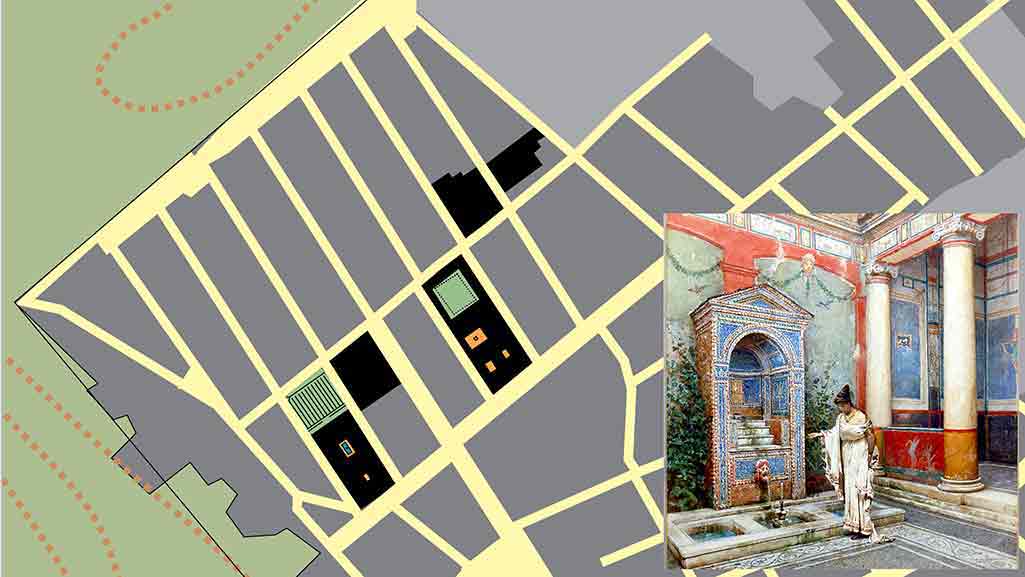Roman landscape architecture

Roman landscape architecture
Vitruvius Polio, a Roman who lived in the 1st century BC, was a military engineer with interests in buildings, clocks, harbours – and the landscape architecture of fortified cities. For reasons of health, comfort and ‘firmness’, Vitruvius advised that cities should be planned in relation to landscape conditions: soils, water and winds. Aristotle attributes the invention of grid street planning to Hippodamus, who lived 4 centuries before Vitruvius. But there are grid cities older than Hippodamus’ hometown – Miletus. A grid of tracks was a standard feature of Roman army camps – and of the colonial cities they often became. Naples and Pompeii are famous examples of grid cities. They had busy shop-lined streets and in Pompeii, there are examples of lush courtyard gardens with no windows onto the streets. Roman London was also planned on a grid, and had courtyard gardens (though few details survive). The forum was in the centre of the city and important buildings were located on the south-facing river bank, including the Praetorium, the hot baths and the temple. The alignment of the road grid followed Vitruvius’ recommendation to give streets as much shelter as possible from the prevailing winds. The character of Roman streets and gardens is shown in the rest of this video, which is about the mood of roman gardens.
